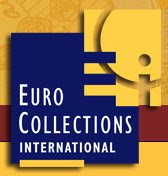 |  |  |
In 2002 a series of bi-metallic Russian coins featuring ancient towns was begun by the Central Bank of Russia. Each year coins were produced that pay tribute to a different city in Russia, where the city was established anywhere between 700 and 1000 years ago. Some of the cities have no recorded establishment, only a first mention in a particular journal, while others have evidence of settlements dating as far back as BC.


Unlike a lot of coin programs throughout the world there is no set regularity to the number of coins released each year in this series, with some years seeing 4 coins issued and other years only 3. This inconsistency can frustrate collectors, as they often look forward to knowing a set number of issues will be released in any given year. Still, that doesn't seem to have slowed the interest level on this historic series, as collectors the world over ponder on the next ancient city to be honored.



There are, however, a few consistencies with regards to the coins themselves, as there should be with any good coin series. For the Ancient Towns of Russia series these include the bi-metallic composition of the coins, made from Brass (Outer Rim) and Cupro-Nickel (Inner Disc). Each coin features the same Obverse design; that of the denomination of 10 Rubles in the center disc (Represented by the number ‘10’ and the word “РУБЛЕЙ” (RUBLES). The number ‘0’ features a latent image generally used as a security measure against counterfeiting. These latent images are becoming more common throughout modern world coins with countries such as the Ukraine and Japan, amongst others, adopting the technique. When held at varying angles, the image on the Ancient Towns of Russia coins shows either ‘10’ or “РУБ” (RUB). In the outer rim at the top of the coin are the words “БАНК РОССИИ” (BANK OF RUSSIA), while at the bottom is always the year of issue. At either side of the coin are stylized twigs that cross over from outer rim to inner disc. The twigs may just be a design element or perhaps they have a greater significance. While this is a standard design for the Ancient Towns of Russia coin series, it is also the design used for all commemorative bi-metallic 10 Ruble Russian coins issued by the Central Bank of Russia.


The Reverse of each coin, while commemorating a different town, does carry consistent features. Those being the inscription of “ДРЕВНИЕ ГОРОДА РОССИИ” (ANCIENT RUSSIAN TOWNS) shown in the outer rim at the top of the coin, as well as the name of each town at the bottom of the coin. The inner disc image always features a view of the town being represented (of course), usually with a prominent landmark featured in the design if appropriate. The coat of arms for the town is also always shown, always in the upper portion of the inner disc.
 |  |  |  |
As yet we have no information as to when the series will end. Russia is full of cities many centuries old so the opportunity to keep the series running for several more years is certainly there – and why not? The series represents a lasting tribute to places in Russia many of us would never have known about, let alone visited, had it not been for the coins in this series. The more attractive element of the series being that the coins are issued at a very reasonable price for collectors - and while the high mintages may mean that there isn’t going to be a huge appreciation in value over the years, those who do stick with it will find themselves with a unique and telling collection of coins that represent a little-known aspect of one of the oldest countries on Earth.
 |  |  |
At the time of this article the following coins have been issued:
2002 Derbent
2002 Kostroma
2002 Staraya Russa
2003 Dorogobuzh
2003 Kasimow
2003 Murom
2003 Pskov
2004 Dmitrov
2004 Kemy
2004 Rijask
2005 Borovsk
2005 Kaliningrad
2005 Kazan
2005 Mcensk
2006 Belgorod
2006 Kargopol
2006 Torzhok
2007 Veliky Ustyug
2007 Vologda
2007 Gdov
2008 Azov
2008 Smolensk
Euro Collections International currently has all released coins from this series available in stock, with plans to source future issues as they are released. You can check out the entire list of coins currently available in this series by visiting our Ancient Towns of Russia Category.









